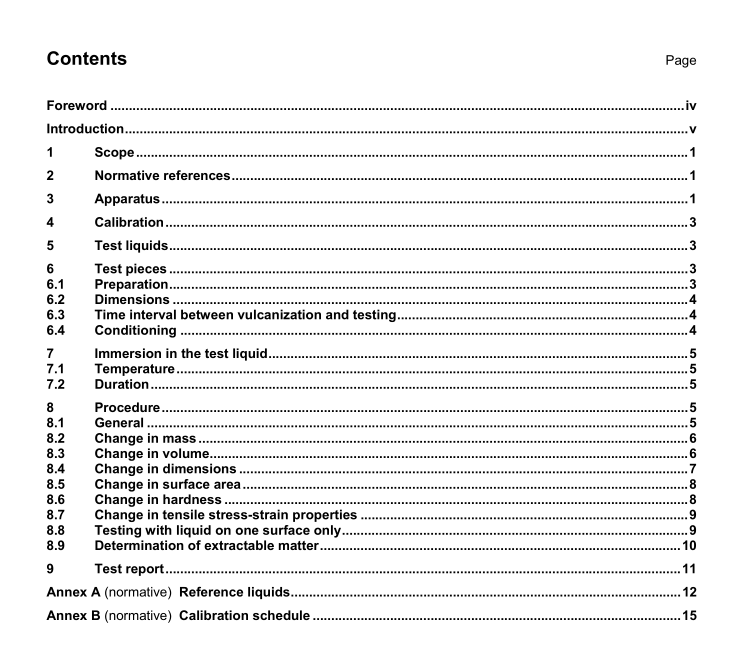ISO 1817 pdf download

ISO 1817 pdf download Rubber, vulcanized or thermoplastic — Determination of the effect of liquids
3.6 Instrument for measuring the change in surface area, capable of measuring the lengths of the diagonals of the test piece. It shall have a scale graduated in divisions of 0,01 mm and should preferably operate without contact with the test piece, for example using an optical system complying with the requirements given for such apparatus in ISO 23529:2010, method D. 4 Calibration The requirements for calibration of the test apparatus are given in Annex B.
5 Test liquids
The choice of the test liquid shall depend on the purpose of the test. When information is required on the service behaviour of a vulcanized or thermoplastic rubber in contact with a particular liquid, then this liquid shall, if possible, be chosen for the test. Commercial liquids are not always constant in composition, and the test shall, whenever practicable, include a reference material of known characteristics. Any abnormal results due to unexpected variations in the composition of the commercial liquid will thus become apparent. It might then be necessary to set aside a bulk supply of the liquid for a particular series of tests. Mineral oils and fuels are liable to vary considerably in chemical composition even when supplied at a recognized specification. The aniline point of a mineral oil gives some indication of its aromatic content and helps to characterize the action of the oil on rubber, but the aniline point alone is not sufficient to characterize a mineral oil; other things being equal, the lower the aniline point, the more pronounced the action. If a mineral oil is used as test liquid, the test report shall include the density, refractive index, viscosity and aniline point or aromatic content of the oil.
Service oils having similar fluid characteristics to the reference liquids (see Annex A, Clauses A.1 to A.3) will not necessarily have the same effect on the material as the reference liquids. Some fuels, particularly gasoline, vary widely in composition and, for some possible constituents, minor variations can have a large influence on the effect on rubber. Complete details of the composition of the fuel used shall therefore be included in the test report. As commercial liquids do not always have a constant composition, a standard liquid consisting of well-defined chemical compounds or mixtures of compounds shall be used as reference liquid for the purpose of classification of vulcanized or thermoplastic rubbers or quality control. Some suitable liquids are listed in Annex A.
When testing to determine the effect of chemical solutions, the concentration of the solution shall be appropriate to the intended use. Ensure that the composition of the test liquid does not change significantly during immersion. The ageing of the test liquid and any interaction with the test pieces shall be taken into consideration. If there are chemically active additives in the liquid, or if there is a significant change in composition by extraction, absorption or reaction with the rubber, either the volume shall be increased or the liquid shall be replaced with fresh liquid at specified intervals.
6 Test pieces 6.1 Preparation Test pieces shall be prepared in accordance with ISO 23529.
6.2 Dimensions
Data obtained on test pieces having different original thicknesses might not be comparable. Therefore, where possible, test pieces shall be of uniform thickness of (2 0,2) mm.
Test pieces cut from commercial articles may be used. For products thinner than 1,8 mm, use the original thickness. If the material is thicker than 2,2 mm, reduce the thickness to (2 0,2) mm.
Test pieces for the determination of the change in volume and mass shall have a volume of 1 cm 3 to 3 cm 3 .
Test pieces for the determination of the change in hardness shall have lateral dimensions of no less than 8 mm.









